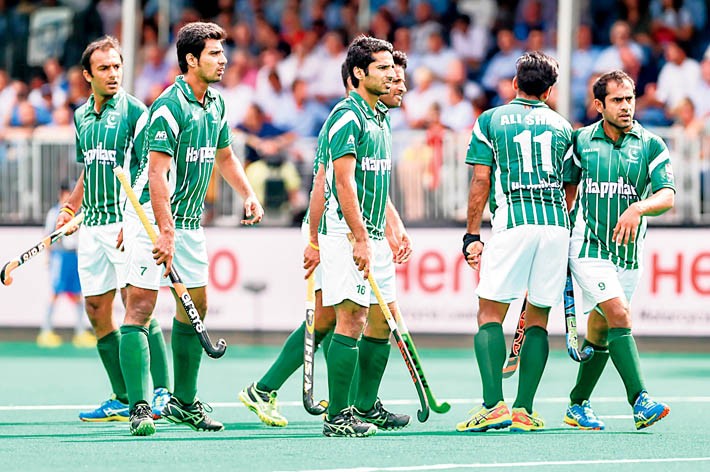
People need to understand that modern hockey is a science which is becoming increasingly difficult for physically and mentally weak sub-continental players coached and trained by inept local coaches

Pakistan hockey has been in doldrums for several years. Successive federations and managements have tried to bail Pakistan hockey out of crisis, but with every SOS attempt, the situation has become grimmer for Pakistan hockey. Once World and Olympic champions, Pakistan today stands at No 13 in FIH ranking, below such teams as Ireland and Canada.
Pakistan’s poor performance in the recently-concluded four-nation tournament in which Australia trounced the national team 9-1 is a clear evidence that Pakistan hockey does not need change of faces but change in approach, training and its very philosophy towards hockey.
Over the last 25 years, hockey has seen more changes than any other sport: from natural grass to different types of artificial surfaces, a revolution in stick materials and goalkeeping equipment and above all the rules that govern the game.
The importance of physical and mental fitness has surpassed the stick work. There is an increasing need for hockey players to be not only highly skilled and tactically astute but also athletically super-fit.
Just imagine a modern European midfielder carrying the ball towards a subcontinent opponent, wrong footing him and exploding into the gap created; the forward who cuts back towards the ball before stepping inside, turning and accelerating on to the ball like a fighter jet; or the goalkeeper who stops a penalty corner strike and is on his feet again within a second to make the second save.
These are not just isolated incidents that happen occasionally in a hockey game. We should expect to see them again and again. Consequently, there is an increasing demand on all players to be able to perform such moves repeatedly.
Our trainers and coaches need to understand that these qualities once thought to be genetic are in fact trainable. Instead of trying to find the natural talent, they should make the available players faster, more agile, more explosive and ultimately better hockey players.
The Europeans have improved immensely in physical strength, speed and agility by introducing SAQ training for hockey, with position-specific drills. Speed, agility and quickness (SAQ) of response and action are the most important things in both team and individual sports.
The SAQ hockey programme concentrates on developing movements whether linear, lateral or vertical that is automatic, explosive and precise, qualities that are required time and time again to wrong foot an opponent and exploit the gap created. Through continuous and precise repetition of SAQ drills, the neuromuscular link between intention and action is improved and imprinted in the player’s mind. As a result, the player is able to react quicker than his or her opponent.
For hockey coaches, SAQ offers an irresistible combination of injury prevention, increased power, improvement in speed and a structured method for players to develop rapid changes of direction.
By applying SAQ programme, they can develop each and every player into a flying horse. The key is understanding this scientific methodology and applying it properly.
The SAQ programme is implemented through simple equipment, which adds variety and stimulation to training sessions. Drill variations in SAQ are endless and once mastered, astonishing results can be achieved.
The equipment for SAQ includes fast-foot ladders and micro and macro V hurdles made of plastic (12 inches in height). It builds sprint endurance on synthetic turf. Viper belt specially made from surgical tubing develops explosive speed in all directions.
There are side steppers for developing lateral movements, reaction balls that bounce in unpredictable directions, punch resistors, over speed tow ropes, break away belts, four-foot plastic stride frequency canes, jelly balls, hand weights, visual acuity ring (30 inches in diameter with four different coloured balls attached to it to develop visual acuity and training skills), peripheral vision stick (about four feet long with a bright coloured ball), and an 18-inch inflatable rubber agility disc.
This training is now highly popular among rugby, football and basketball players besides field hockey.
The purpose of introducing the SAQ hockey and sharing some information about its equipment was to let the readers know that whatever they see and hear about the downfall of Pakistan hockey due to poor management and politics in the game is just one side of the story. The fact remains that Pakistan has only four FIH-qualified coaches and they too lack awareness of modern-day hockey.
People need to understand that modern hockey is a science which is becoming increasingly difficult for physically and mentally weak sub-continental players coached and trained by inept local coaches.
If we continue to train and manage hockey and other sports teams the way we have been doing, the day is not far when Pakistan sports will only be part of history books.